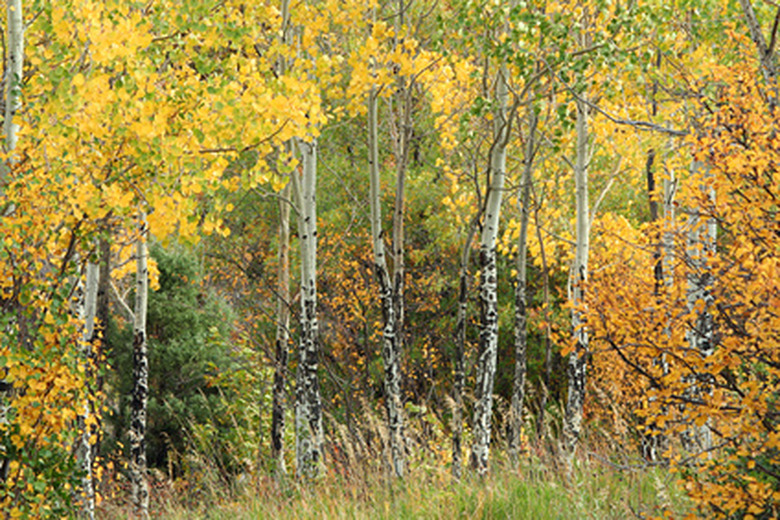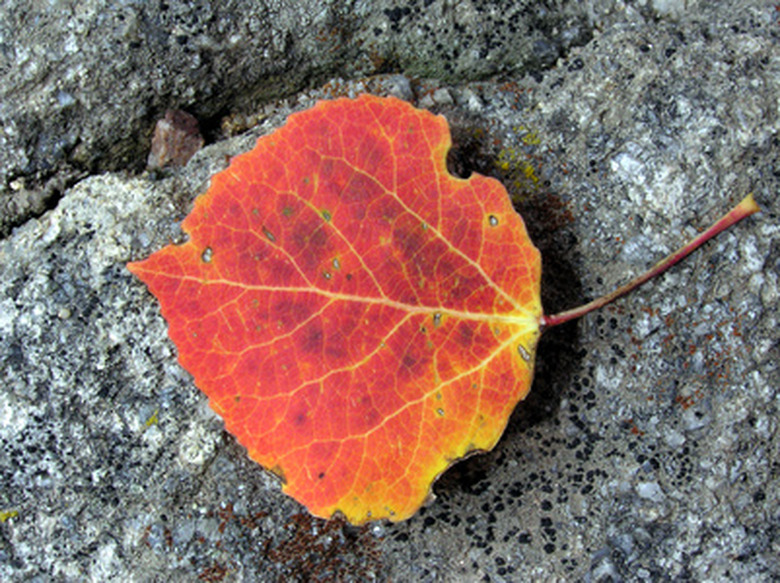Quaking Aspen Tree Facts
The quaking aspen (Populus tremuloides) is an important species of tree for wildlife throughout its range, providing food and shelter for mammals and birds. According to the San Francisco State University Department of Geography, quaking aspen is a vital source of pulpwood in the Great Lakes States and a mainstay of many Canadian industries as well. The quaking aspen has some attractive features but has limited use as a landscaping species due to some of its habits.
Size
The quaking aspen, also called trembling or golden aspen, can grow to heights of 40 to 50 feet and possess a spread of some 25 feet in its canopy. The tree may grow even taller under the best circumstances. Quaking aspen leaves are almost completely round and can grow to be 3 inches wide and long. The trunk of this tree may be in the range of a foot to a foot and a half in width.
- The quaking aspen (Populus tremuloides) is an important species of tree for wildlife throughout its range, providing food and shelter for mammals and birds.
- The quaking aspen, also called trembling or golden aspen, can grow to heights of 40 to 50 feet and possess a spread of some 25 feet in its canopy.
Effects
The tree's odd name comes from the fact that its leaves will tremble in even the slightest breeze. The reason for this lies in the stems of the foliage, which are flat rather than rounded. This facet of the tree, combined with the round leaves, makes the weakest breeze move the leaves in unison, creating an effect that you can hear as the leaves move back and forth. This comes in handy during high winds, as the leaves' design reduces air drag that can break the branches and trunks of other species.
Problems
Quaking aspen has many problems associated with it that make it a troublesome landscaping species. A number of insect pests attack it, and potential diseases typically cause it to be a very short-lived tree. In the warmer states, says the Ohio Department of Natural Resources website, the insect larvae that normally die off or go into a stage of dormancy in colder regions will feast on the tree throughout the winter, precipitating even more damage. The quaking aspen reproduces through suckering, growing new clones from its roots, which you would have to deal with if you grow the tree on your property. The roots also tend to make their way into sewers, sidewalks and other areas where they can cause trouble.
- The tree's odd name comes from the fact that its leaves will tremble in even the slightest breeze.
- This comes in handy during high winds, as the leaves' design reduces air drag that can break the branches and trunks of other species.
Geography
No other tree in North America has a wider distribution geographically than quaking aspen. In addition to growing across the majority of Canada, the tree exists in most of Alaska. Quaking aspen flourishes throughout much of the West, including the Rocky Mountains. The tree also grows in the East from Pennsylvania to Maine and westward through the Great Lakes and Minnesota.
Considerations
A quaking aspen grows can handle nearly every kind of soil. It grows well in rich soil, limestone-based soil and rocky ground. Quaking aspen does best in full sun and the tree will often grow in pure stands in the wild. Quaking aspen is among the first trees to grow after a forest fire, and it colonizes areas where logging has depleted the other trees. In time, though, the trees give way to conifers like pines and spruces, states the "National Audubon Society Field Guide to Trees."
- No other tree in North America has a wider distribution geographically than quaking aspen.
- Quaking aspen is among the first trees to grow after a forest fire, and it colonizes areas where logging has depleted the other trees.

